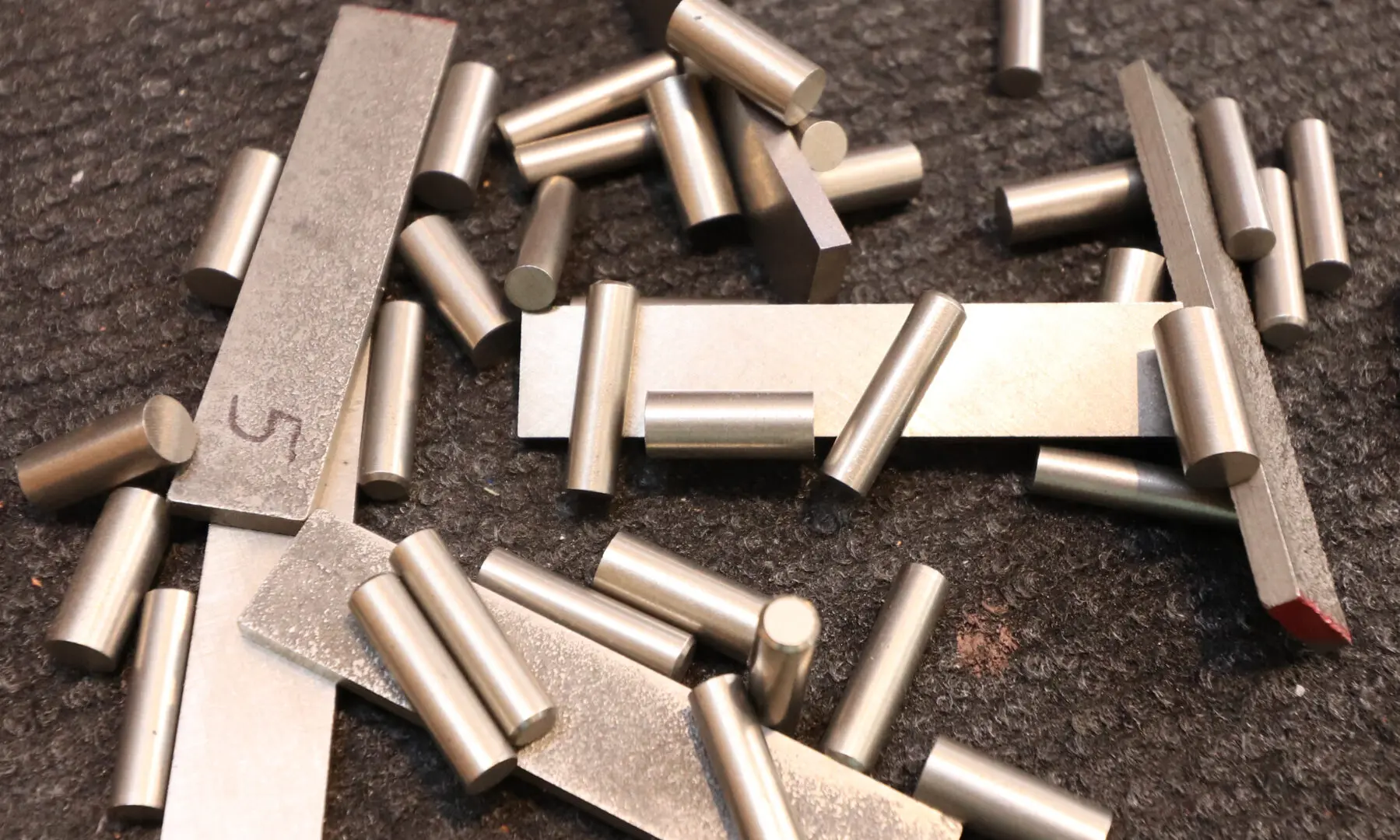The differences between pickup magnets
So many options to choose from! They all look the same, so what should I get? Magnets, the engines that drive every electromagnetic pickup, are essential and critical to the understanding of our sound. This article is here to put everything in order, to simplify and clarify but also expand a little on the subject.
We will talk about Alnico and ceramic magnets, but there are other types like rubberized-ferrite and even rare-earth.

What are Alnico magnets?
Alnico magnets were invented in the 1920’s. They are hard, solid magnets, made of iron alloys, composed with aluminium, nickel, cobalt (hence Al-Ni-Co) and sometimes copper and titanium.
Alnico magnets are widely used in many applications, they are strong, work well in high temperatures, resistant to corrosion, can be magnetized quite easily and are electrically conductive.
Each magnet manufacturer uses slightly different percentages of materials that may slightly influence the tone. Guitar pickups use mostly Alnico types 2, 3, 4, 5 and 8.
What are ceramic pickups?
The use of ceramic magnets started in the 1960’. They are made from iron oxide blended with some barium, zinc, manganese or/and nickel. These magnets are widely used for refrigerator magnets, loudspeakers, electric motors etc. and are very stable.
The ceramic magnets are nonconductive and are much cheaper than Alnico, making them much more popular for everyday use.
Magnet styles in pickups
There aren’t many designs for magnets in pickups. The most common are bar magnets, which are used generally for humbuckers but can be found also in single coil pickups like the p-90, and pole magnets which are very common in Fender guitars single coil pickups.
The traditional humbucker’s layout consists of a magnet underneath the coils, and the traditional Strat single coil for instance uses the magnetic poles which go through the coil. This affects the tone significantly, but the pickup design is explained in another article.
What are the tonal differences?
Each magnet creates different magnetic fields in strength and shape, all depending on the physical dimensions of the magnet, chemical composition and the pickup structure design.
Guitar strings vibrate within the pickup’s magnetic field, interacting and altering it slightly and thus producing an electrical signal that goes to the amp.(What is an electromagnet pickup?)
Each magnet type (considering all other variables are the same) tends to create different frequencies, volume and feel:
Alnico 2 magnet pickups tend to produce soft and articulated low ends, wide and rich midrange, sweet treble, and low output. A mellow magnet that’s great for finger picking, Country, Blues, Folk, Indie and Classic Rock. ~ 530-590 Gauss for a traditional pickup bar magnet.
Alnico 3 magnets, weaker in magnetic strength than alnico 2, have more treble and a softer bottom end, with lower output than alnico 2. The softness is great for deep sparkling cleans, perfect for Soft Rock, Blues and Funk. ~ 470-490 Gauss for a traditional pickup bar magnet.
Alnico 4 magnets give flatter EQ which makes them “transparent” to the guitar’s natural resonance. This magnet is great for true projection of resonance making it perfect for Jazz, Pop, Indie. ~ 630-670 Gauss for a traditional pickup bar magnet.
Alnico 5 magnets generate lots of tight lows, balanced midrange, powerful and sharp highs, higher output and a slightly tighter sound. This is probably the most used magnet in guitar pickups today. The elevated volume and the wider eq make it very popular and versatile. Best for Rock, Metal, Funk, Jazz, Pop. ~ 710-770 Gauss for a traditional pickup bar magnet.
Alnico 8 magnets have the strongest magnetic field of all Alnico. Lots of mids, fat highs and massive lows. It is not frequently used because of its strong magnetic pull and massive output. Great for Metal, Hard Rock, Fusion and Prog. ~1200-1320 Gauss for a traditional pickup bar magnet.
Ceramic magnets are even stronger than Alnico, making them louder with pronounced mids and a quick bass response. Due to harsher high frequencies they are used more commonly by players who use distortion and they tend to sound thin and lifeless when playing clean, according to many guitarists… Usually charcoal black in color which makes them easy to identify. ~ 1250-1300 Gauss for a traditional pickup bar magnet.
| Alnico II | Alnico III | Alnico IV | Alnico V | Alnico VIII | Ceramic |
| Indie, Country,
Blues, |
Soft Rock, Funk, Blues | Jazz, Indie, Pop | Rock, Metal, Funk, Jazz, Pop | Warm tone for Prog, Fusion, Metal | Brighter than Alnico VIII – Prog, Fusion, Metal |
| Alnico | Ceramic |
| Expensive | Cheap |
| Warm and natural sound | Harsh and loud |
| Less used than ceramics | Widely used and very common |
| Conductive | Nonconductive |
| Hard to identify | Easier to identify |
It is fairly easy to replace a magnet in a traditional P.A.F design humbucker. Inside the pickup, between the bobbins and the baseplate there’s a small gap in which the magnet is inserted. By slightly loosening the screws that fasten all the components together, it is possible to remove the magnet and replace it with a different one. Although a bit of a hassle, it’s a great way to test and understand how magnetics change tone. You won’t always need to replace an entire stock humbucker with a new one, if curiosity is your thing. Just make sure to let a good technician with steady hands do the job.
Summery
There’s no right answer to which magnet is the better one, they are all just different. A player’s job is to inquire, test and try to find the correct magnet for the right tone and feel. This article will hopefully help to steer you in the right direction when searching for the perfect tone. For any question regarding the subject please feel free to contact us at Coilsboutique.com.

